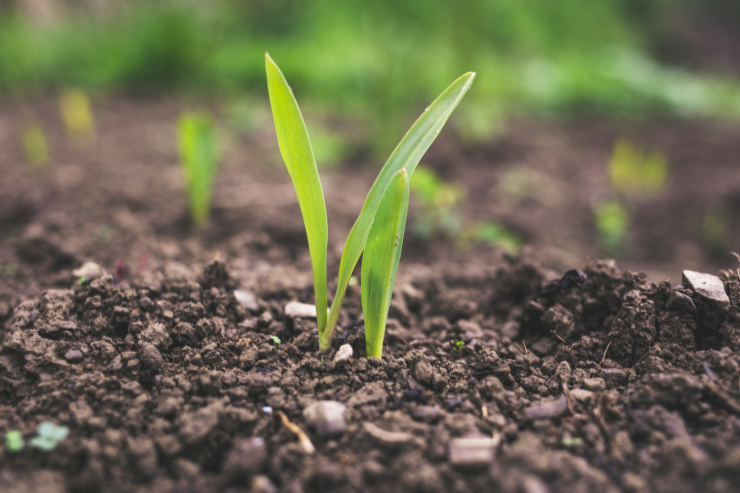This guide will unveil the secrets to help you transform your lawn into a beautiful, healthy green carpet. Read on to start your journey towards getting the best lawn on the block.
1. Start with the Soil
2. Choose The Right Grass Type
Not all grass is created equal, and each type has its unique characteristics. Before you plant any seeds or sod, research the different types of grass that are suitable for your climate and lawn usage patterns. Factors such as sunlight exposure, foot traffic, and maintenance requirements should be considered when selecting the grass type for your lawn.
3. Mow Appropriately
Mowing may seem like a simple task, but it's crucial to do it correctly to maintain a healthy lawn. Avoid cutting off more than one-third of the grass height at once, as this can stress the grass and make it vulnerable to diseases and pests. Also, make sure to mow with sharp blades and at the recommended height for your grass type.
4. Water Wisely
Water is essential for a healthy lawn, but overwatering can do more harm than good. Instead of watering every day, water deeply once or twice a week to encourage deep root growth. This will help your lawn withstand drought and reduce the risk of fungal diseases.
How to Water Properly
Watering your lawn properly is more than just turning on your sprinkler system. It's about understanding your lawn's needs and adapting your watering schedule accordingly. Follow these steps to ensure you're watering your lawn the right way.
- Time Your Watering: The best time to water your lawn is early morning, preferably before 10 am. This allows the water to seep deep into the soil before the day's heat causes it to evaporate.
- Water Deeply, Not Daily: Instead of shallow daily watering, aim for long and less frequent sessions. This encourages the grass to grow deeper roots, making it more drought-resistant. As a rule, you should water your lawn until the top 6-8 inches of soil is wet, typically requiring about 1 inch of water.
- Adjust According to the Weather: Pay attention to the weather and adjust your watering schedule accordingly. If it's been raining a lot, you might not need to water at all. On the other hand, during hot and dry periods, your lawn might need extra watering.
- Use the Right Equipment: Using sprinklers or a hose-end sprinkler attached to a timer can help deliver water evenly and prevent overwatering. However, consider investing in an in-ground irrigation system with a rain sensor for larger lawns to conserve water.
- Look for Signs of Under or Over Watering: Signs of an under-watered lawn include grass that stays flat when stepped on and a bluish-grey colour. Overwatered lawns may have a damp smell or have mushrooms growing.
5. Fertilize Regularly
Just like any other plant, grass needs nutrients to thrive. Fertilizing your lawn at least once a year will give it essential nutrients for growth and colour. However, be careful not to overfertilize, as this can lead to excessive growth and increased susceptibility to pests and diseases.
How to Fertilize Your Lawn
Fertilizing your lawn is a critical step in maintaining its health and vibrancy. If done correctly, it can provide your grass with the necessary nutrients to grow thick and green. Here are some steps to guide you through the process.
- Choose the Right Fertilizer: There are many types of fertilizers available, each with different nutrient compositions. A balanced fertilizer (like a 10-10-10 formula containing equal proportions of nitrogen, phosphorus, and potassium) is a safe choice for most lawns. Alternatively, you could choose a fertilizer tailored to your grass type and soil condition based on a soil test.
- Timing Is Important: The best time to fertilize your lawn is in the spring when the grass starts to grow and again in the fall to prepare it for winter. Avoid fertilizing during the hot summer months, as the heat can cause the fertilizer to burn the grass.
- Apply the Fertilizer Properly: Use a broadcast or drop spreader for even distribution. It's recommended to spread half of the fertilizer in one direction (north to south) and the other half in a perpendicular direction (east to west) to ensure complete coverage.
- Water After Fertilizing: After applying the fertilizer, water your lawn thoroughly to help the fertilizer penetrate the soil and reach the grassroots.
- Follow Safety Instructions: Always follow the manufacturer's instructions on the fertilizer package. Keep pets and children off the fertilized area until it's dry or as recommended on the package.
- Store Fertilizer Safely: Store leftover fertilizer in a cool, dry place away from children and pets. Make sure the bag is sealed to prevent moisture from getting in.
6. Aerate Your Lawn
Over time, soil can become compacted, preventing air, water, and nutrients from reaching the grassroots. This is where lawn aeration comes in – it involves puncturing small holes in the soil to allow for better airflow and nutrient absorption. You can rent or buy an aerator or hire a professional to do it for you.
7. Keep Weeds and Pests at Bay
Weeds and pests can quickly turn a beautiful lawn into an eyesore. Regularly inspect your lawn for any signs of weeds or pests and take prompt action to control them. You can use organic methods such as hand-weeding, natural pest repellents, or chemical treatments.
Conclusion
By following these secrets, you can achieve and maintain a beautiful lawn that will make your neighbours green with envy. Remember to start with healthy soil, choose the right grass type, mow properly, water wisely, fertilize regularly, aerate your lawn, and keep weeds and pests under control.
With consistent care and attention, you'll have the best lawn on the block in no time! So start implementing these secrets to enjoy a lush, green lawn all year round.
*Collaborative post









No comments